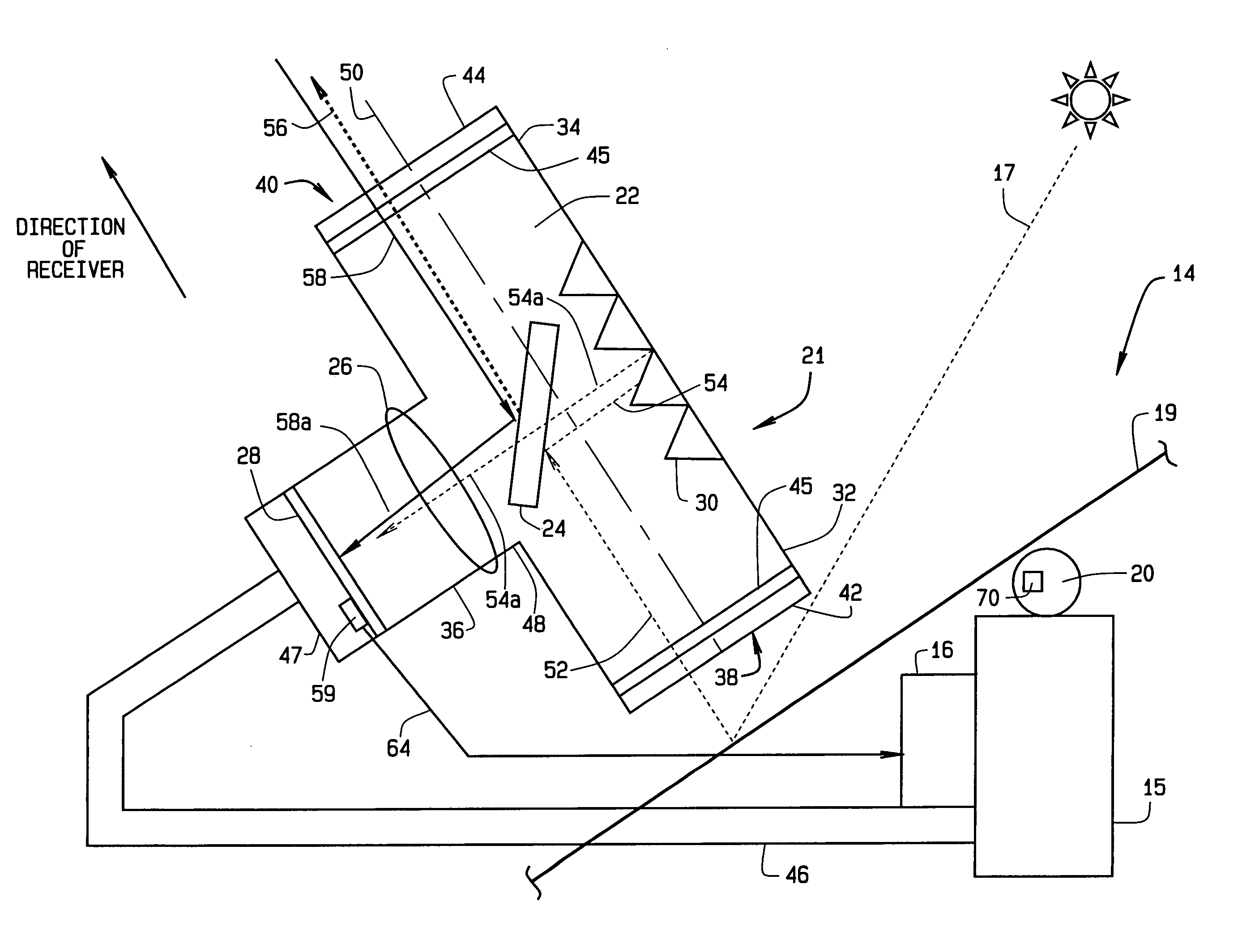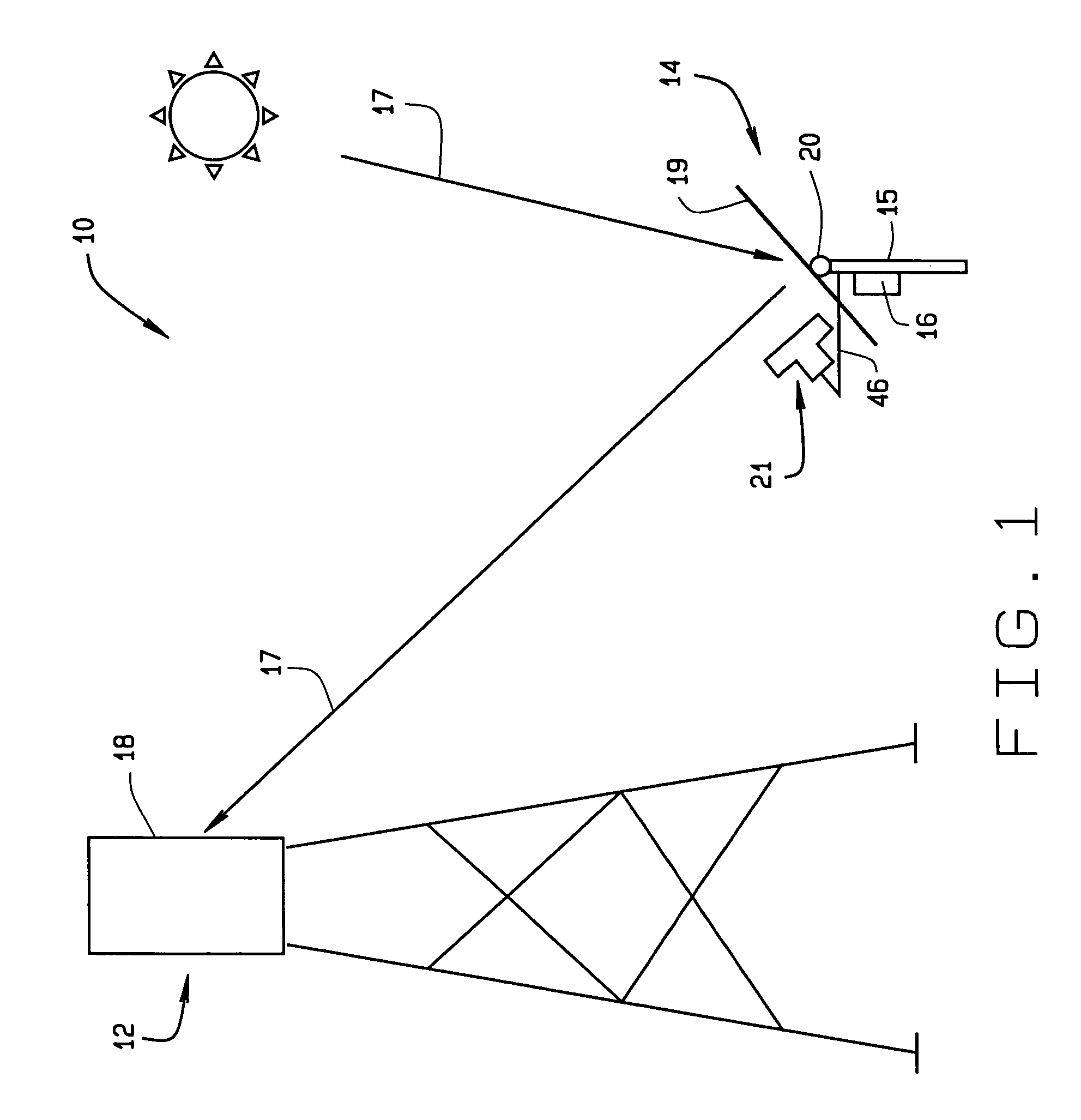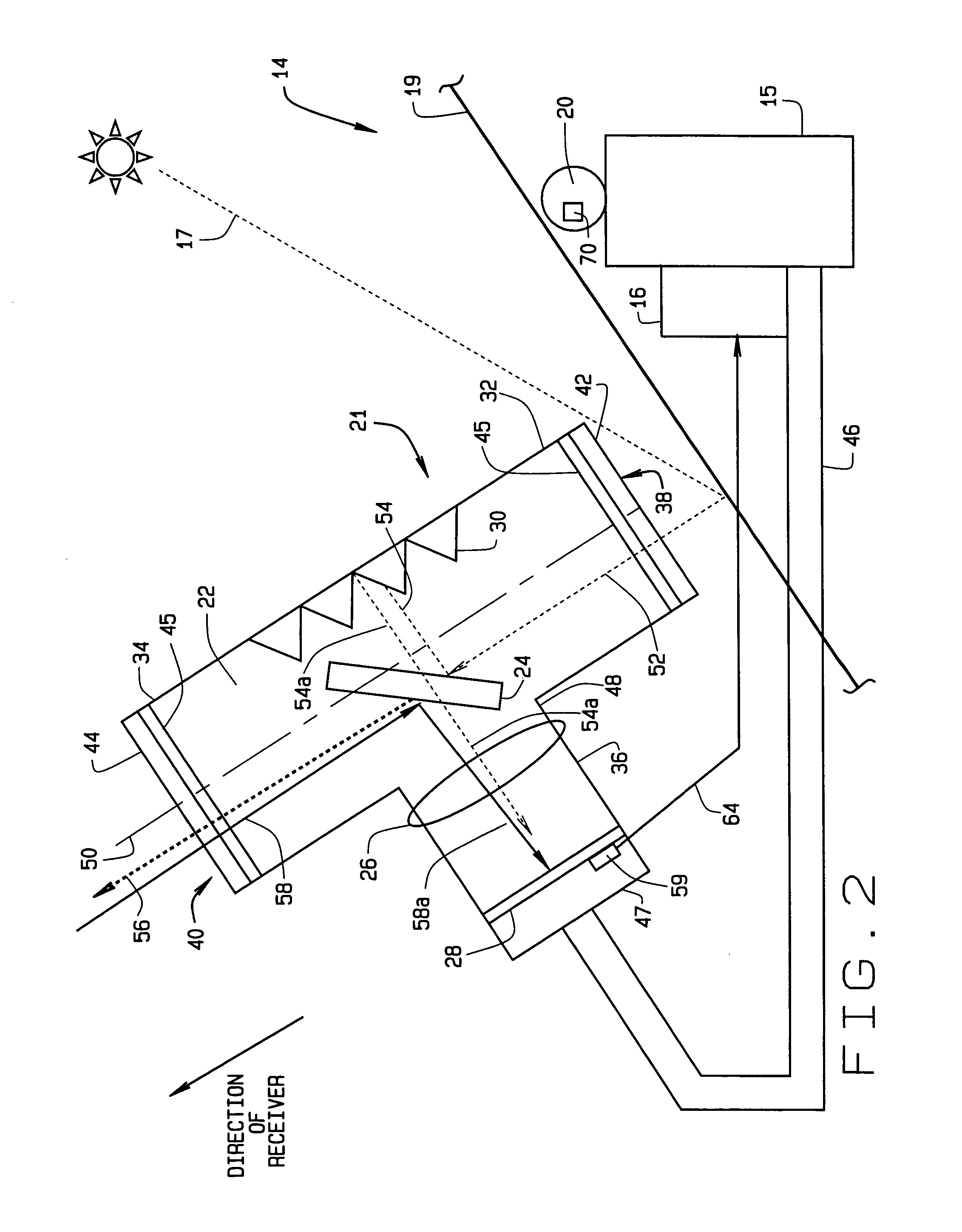Feedback control method for a heliostat
a solar collector and heliostat technology, applied in the field of heliostat solar collectors, can solve the problems of affecting affecting the so as to improve the pointing accuracy of the heliostat, accurate solar energy is reflected onto the receiver
- Summary
- Abstract
- Description
- Claims
- Application Information
AI Technical Summary
Benefits of technology
Problems solved by technology
Method used
Image
Examples
Embodiment Construction
[0020]The following description of the preferred embodiment(s) is merely exemplary in nature and is in no way intended to limit the invention, its application, or uses.
[0021]FIG. 1 illustrates an exemplary solar energy system 10 in accordance with a preferred embodiment of the present invention. The system 10 includes a receiver 12 and at least one heliostat 14. Both the receiver 12 and the heliostat 14 are fixed in location by their respective support structures. Specifically, the heliostat may be supported by a pedestal 15.
[0022]In operation, a controller 16 positions the heliostat 14 using a feed forward, sun-tracking equation, also referred to herein as a prediction equation. Light energy 17 from the sun reflects off the heliostat 14 and is directed toward a surface 18 of the receiver 12. The light energy 17 can be any frequency of light, for example, the light energy 17 can be visible light, infrared light or near infrared light. The heliostat 14 includes a reflective surface 1...
PUM
 Login to View More
Login to View More Abstract
Description
Claims
Application Information
 Login to View More
Login to View More - R&D
- Intellectual Property
- Life Sciences
- Materials
- Tech Scout
- Unparalleled Data Quality
- Higher Quality Content
- 60% Fewer Hallucinations
Browse by: Latest US Patents, China's latest patents, Technical Efficacy Thesaurus, Application Domain, Technology Topic, Popular Technical Reports.
© 2025 PatSnap. All rights reserved.Legal|Privacy policy|Modern Slavery Act Transparency Statement|Sitemap|About US| Contact US: help@patsnap.com



